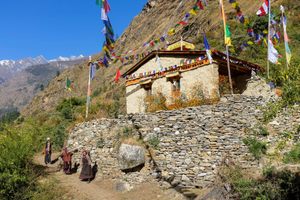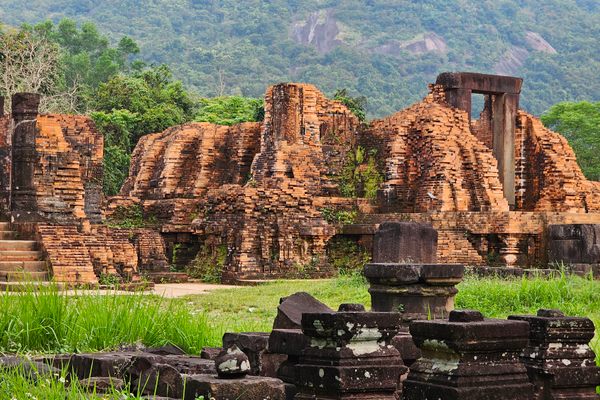About
Nestled amongst the brambles in what used to be the suburbs of a once mighty city are two circular piles of brick that have puzzled archeologists since they were first uncovered in the late 1960s. A commonly accepted explanation is that these two structures are stupas built to commemorate King Suddhodan and Queen Maya Devi, the parents of Siddhartha Gautama (aka Lord Buddha).
Although scholars have debated the ages of the stupas, the larger one was likely built first, sometime after the fourth century BC, and was constructed in four stages to achieve its 52-foot diameter. The second stupa was built later in a single phase and measures 26 feet in diameter.
Following the first examination of the site in the late 1960s, archeologists were once again attracted to the stupas in 2014-2016 after measuring dipolar magnetic anomalies within them. They concluded that the stupas are likely filled with fired ceramics and/or drinking vessels. But so far, surveys have not yielded results that would warrant excavating the stupas and disturbing the integrity of the site.
The stupas lie outside the ruined walls of ancient Tilaurakot, the colossal palace where it is said Buddha once lived. Some sources have suggested that these two stupas were actually part of a set of four that commemorate Buddha’s Four Sights, the experiences that inspired him to abandon his princely heritage and pursue a philosophical path devoted to eliminating human suffering.
As the story goes, Siddhartha’s father did not allow him to leave the palace precisely because King Suddhodan feared his son would embrace an acetic life. It was not until Siddhartha was 29 years old that he finally ventured outside the palace confines and encountered the Four Sights—an old man, a sick man, a dead man, and an ascetic. Thus enlightened to the truth of the human condition, Siddhartha chose to follow the ascetic’s example and find constructive responses to inevitable suffering.
Whatever the purpose of these superannuated stupas, they are likely associated with Buddha’s inner circle and are well worth a side trip while touring Kapilvastu and Tilaurakot.
Related Tags
Know Before You Go
The road to reach these stupas is a bit rough and winds its way through a small village. Visitors are likely to be investigated by curious neighborhood children.
Community Contributors
Added By
Published
November 14, 2024
Sources
- https://saarang.com.np/story/tilaurakot/
- https://www.academia.edu/53249017/Buddhist_Stupas_in_Ancient_Shakya_Territory
- https://www.wisdomlib.org/gallery/buddhist-art-gallery-photographs-nmn/1759
- https://kathmandupost.com/travel/2019/09/21/seven-historical-sites-in-kapilvastu-that-you-probably-didn-t-know-about






















